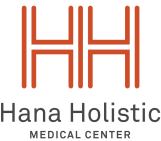What is Acupuncture Treatment For?
- drhana1
- Jun 8, 2024
- 3 min read
Acupuncture involves the insertion of very thin needles through your skin at strategic points on your body. As a key component of traditional Chinese medicine, acupuncture is commonly used to treat pain and increasingly for overall wellness, including stress management.
How Does Acupuncture Work?
Traditional Chinese medicine explains acupuncture as a technique for balancing the flow of energy or life force — known as chi or qi (chee) — believed to flow through pathways (meridians) in your body. By inserting needles into specific points along these meridians, acupuncture practitioners believe that your energy flow will re-balance.
Western Medicine Perspective
Many Western practitioners view the acupuncture points as places to stimulate nerves, muscles, and connective tissue. Some believe that this stimulation boosts your body's natural painkillers.

Why is Acupuncture Done?
Acupuncture is used mainly to relieve discomfort associated with a variety of diseases and conditions, including:
Chemotherapy-induced and postoperative nausea and vomiting
Dental pain
Fibromyalgia
Headaches, including tension headaches and migraines
Labor pain
Lower back pain
Neck pain
Osteoarthritis
Menstrual cramps
Respiratory disorders, such as allergic rhinitis
Tennis elbow
What to Expect During an Acupuncture Treatment
No special preparation is required before acupuncture treatment.
Choosing a Practitioner
When choosing an acupuncturist, consider the following steps:
Ask for recommendations from trusted sources.
Check the practitioner's training and credentials.
Interview the practitioner about the treatment, its likelihood of success, and the costs involved.
Verify whether your insurance covers acupuncture.
During the Procedure
During an acupuncture treatment, your acupuncturist inserts very thin needles into specific spots on your body. The process usually involves:
Needle Insertion: The needles are inserted to various depths at strategic points on your body, usually causing little discomfort.
Needle Manipulation: The practitioner may gently move or twirl the needles after placement or apply heat or mild electrical pulses.
Needle Removal: The needles remain in place for 10 to 15 minutes while you lie still and relax, with usually no discomfort upon removal.
After the Procedure
Some people feel relaxed and others feel energized after an acupuncture treatment. However, not everyone responds to acupuncture, and if your symptoms don't begin to improve within a few weeks, it may not be right for you.
Risks of Acupuncture
The risks of acupuncture are low if you have a competent, certified acupuncture practitioner using sterile needles. Common side effects include soreness and minor bleeding or bruising where the needles were inserted. Single-use, disposable needles are the standard practice, so the risk of infection is minimal.

Special Considerations
Pacemaker: Inform your practitioner if you have a pacemaker, as mild electrical pulses applied to the needles may interfere with its operation.
Pregnancy: Some acupuncture points are thought to stimulate labour, which could result in premature delivery. Always inform your practitioner if you are pregnant.
Insurance for Acupuncture
At Hana Holistic, we strive to make acupuncture therapy accessible to everyone. We are pleased to accept Alameda insurance for our acupuncture services. Check with your insurance provider to understand your coverage details. If you have any questions about using your insurance for acupuncture treatments, our staff is here to help guide you through the process.
Results
The benefits of acupuncture are sometimes difficult to measure, but many people find it helpful for controlling various painful conditions. Given its few side effects, acupuncture may be worth trying if conventional methods aren't providing adequate pain relief.

Kommentare